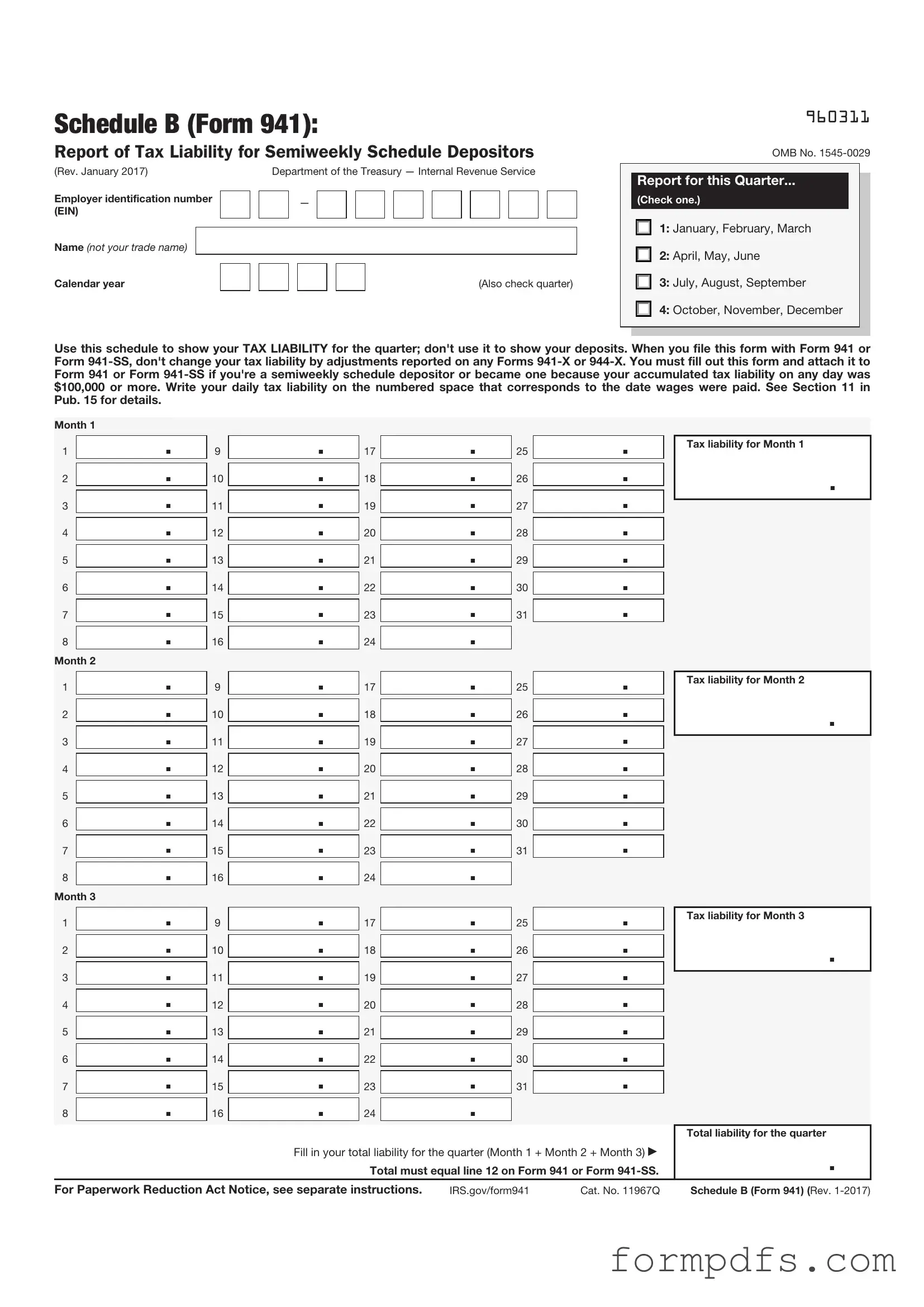Blank IRS Schedule B 941 PDF Form
The IRS Schedule B (Form 941) is a supplemental form used by employers to report their tax liabilities for Social Security, Medicare, and federal income tax withholding. This form provides detailed information on the wages paid to employees and the taxes withheld during a specific quarter. Understanding how to accurately complete this form is essential for compliance and to avoid potential penalties.
To get started on filling out the form, click the button below.
Open IRS Schedule B 941 Editor
